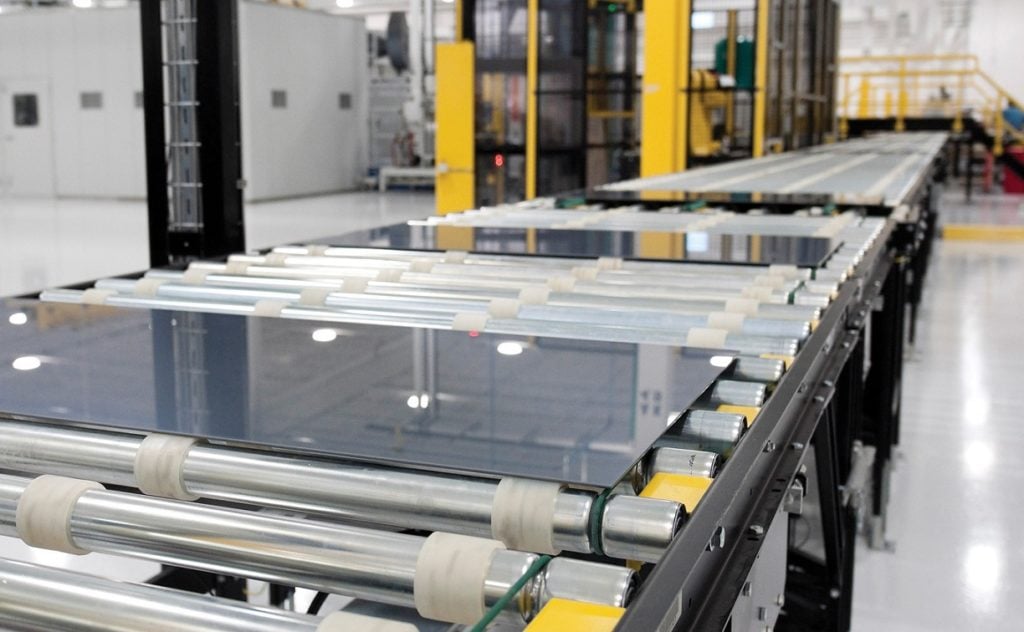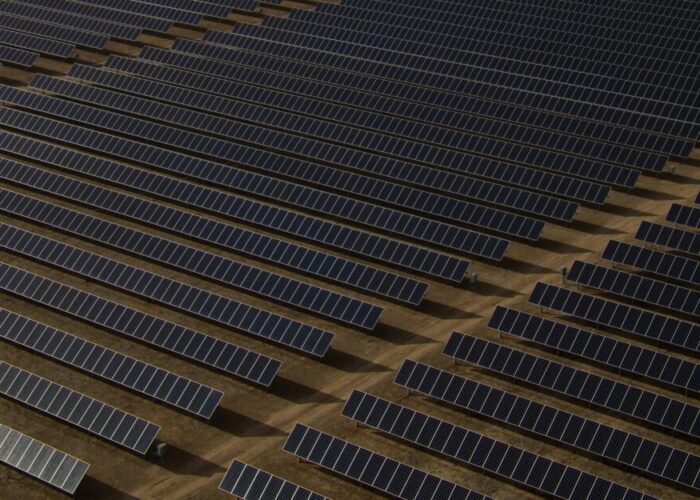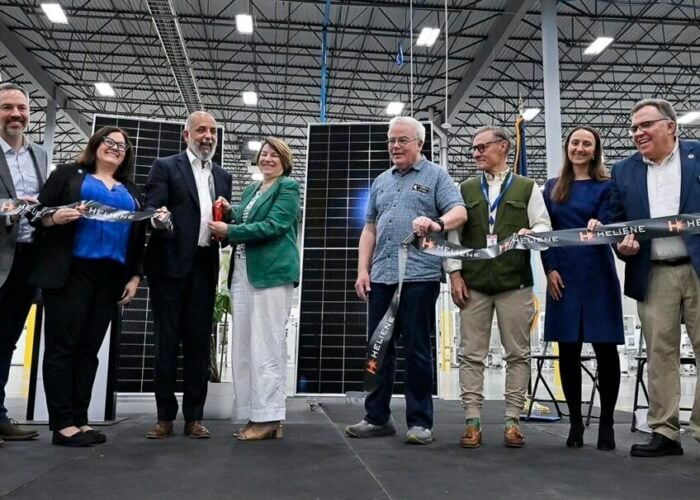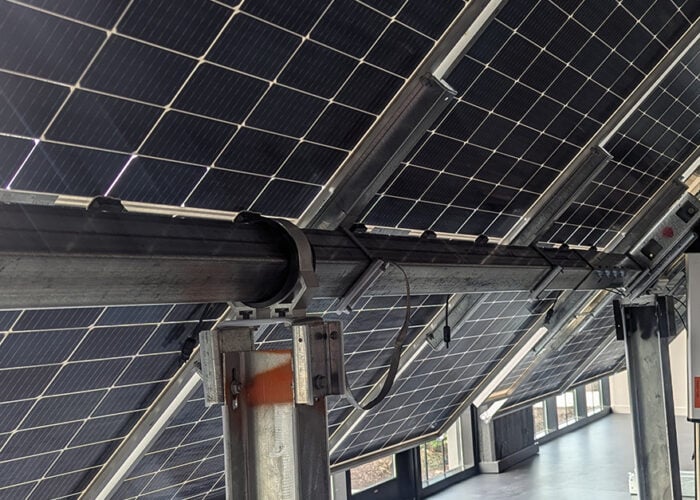
Last year was an important one for the US solar industry in terms of investment with the release of several sets of guidance from the US Department of Treasury and Internal Revenue Service (IRS) that clarified tax credits both at the downstream and upstream level with Section 45X credits.
The appetite for clean energy transferable tax credit transactions was very high, as shown by a report from Crux, an ecosystem for entities to transact and manage transferable tax credits, earlier this year. Between US$7 and US$9 billion in transferable tax credit transactions were made in the last year in the US.
Unlock unlimited access for 12 whole months of distinctive global analysis
Photovoltaics International is now included.
- Regular insight and analysis of the industry’s biggest developments
- In-depth interviews with the industry’s leading figures
- Unlimited digital access to the PV Tech Power journal catalogue
- Unlimited digital access to the Photovoltaics International journal catalogue
- Access to more than 1,000 technical papers
- Discounts on Solar Media’s portfolio of events, in-person and virtual
This interest in renewables, and particularly solar PV, has been across all segments of the market and not just utility-scale, with community solar seeing an increased interest from investors, as highlighted in a PV Tech Premium article in February.
“The largest category of credits within that report was solar; the next largest category was 45X,” says Alfred Johnson, CEO at Crux. This is despite the guidance on advanced manufacturing production credit being released in December 2023.
Thin-film solar module manufacturer First Solar kicked the ball first in a deal worth US$700 million on tax credit transfer agreements (TCTAs) with finance tech company Fiserv days after the guidance was released. The first of its scale of many more to come this year and the following ones. “The market is definitely moving on 45X credits,” says Johnson.
“45X is an attractive credit to buyers. It is a production tax credit (PTC) as opposed to an investment tax credit (ITC). Based on the units that you produce of each of those pieces, you get a corresponding amount of 45X production tax credits that can then be sold or taken to the government for refundability,” explains Johnson.
Timeframe difference between transferability and elective pay
With pricing on 45X credits being very healthy, Johnson says they have seen more companies choosing the transfer path rather than the elective pay one. The timeframe between one or another is dependent on how long a company is willing to wait to be paid. “In the most recent elective pay guidance that the Treasury Department released earlier this month, they declined to commit on a specific amount of time by which they would pay you for the credit that you filed,” says Johnson.
On the other hand, within the transferability market, a company is more likely to be paid almost immediately, at the cost of selling it at a discount to the dollar.
“There is another choice that the developers and manufacturers need to make, which is once you elect to take elective pay, so refundable tax credits from the government, you have a five-year window by which you are in the elective pay regime. And that means that for some developers, they are looking for elective pay to be back loaded into the part of the decade when they are producing a lot more material.”
Taking that into account, Johnson says that companies will more likely choose the transferability route in the first three years of a project, while as production ramps up in the following years it will favour elective pay in order to get the full value of the credit based on higher levels of production capacity.
First Solar’s 45X credit deal
“When [the First Solar] deal happened, the market took note of the fact that it had cleared at 96 cents. There has been an expectation among sellers of 45X that we would see similarly strong pricing,” says Johnson, adding that the US$0.96 deal might be a high watermark for some time. Demand is strong enough in the market to continue seeing high prices for manufacturing deals, similar to prices in other production tax credit categories.
“There is a lot of demand for 45x credits and we have seen that on Crux. Typically, when a 45X credit hits our market, we will often see multiple bids in single-digit, hours or days after the credit is posted, demonstrable of a high amount of tax investor demand for that kind of credit,” explains Johnson.
Johnson adds that 45X projects have received a bid within the first day of listing about 30% of the time, and 60% of the bids on 45X projects have historically been submitted within the first week. At this time, every 45X credit listed on Crux in 2023 received at least one bid.
Technology-wise the difference between First Solar’s cadmium telluride thin-film PV technology and silicon PV manufacturers is no different in terms of valuable credit that a company can get.
“One of the reasons that any 45X credit would be valued differently is because of the number of components that you have to look at in order to get/diligence the credit. A torque tube itself produces a much smaller credit than a silicon PV wafer, cell or module. And so the diligence aspect of a torque tube related credit may be a little bit higher due to the number of components,” says Jim Alderson Smith, founding principal at Crux, adding that “the way we are seeing things in the 45X market is that bigger is better”.
Convergence between upstream and downstream
In a recent blog post on PV Tech, advisory body, Clean Energy Associates (CEA) expected annual module capacity in the US to reach 35GW by the end of the year, more than a quadrupling in only 24 months. As more domestic capacity becomes available in the US, buyers will have more options to source its capacity needed to build solar PV projects across the country.
Interest in renewables has been ever growing in the US since the passing of the Inflation Reduction Act, both at the upstream and downstream level.
“We are seeing increasing convergence of 45X credits with credits that are associated with other kinds of renewable electricity generation. A PTC associated with wind and solar, or even an ITC associated with solar or battery storage. We’re increasingly seeing that a PTC-like 45X credit will trade more similarly to another PTC, like one that is associated with production out of a wind facility.”







